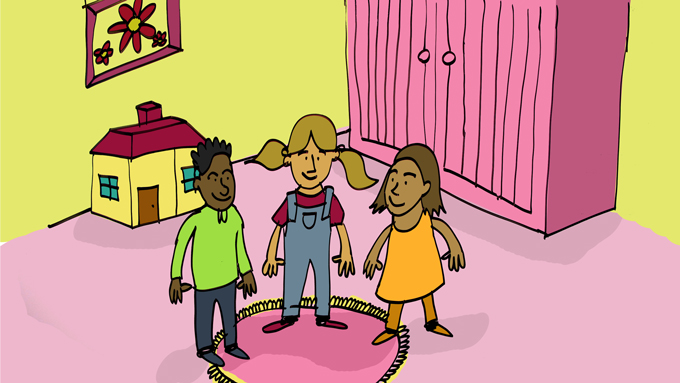Learning a language is child’s play
Our research on play is looking at how this symbolic exchange between parents and children relates to children’s language acquisition.
Very young children usually cannot remember a few words that you tell them, but they can somehow master complex grammar. ANU researchers have been investigating this peculiar riddle, which indicates that learning a language is child’s play.
Some people think that because very young children are good at learning languages, they have an innate knowledge of language—like a programmed robot. One theory, for example, is that children are born with an expectation that languages have verbs and nouns.
Associate Professor Evan Kidd, a researcher at ANU Research School of Psychology, disputes this theory.
“What I and my colleagues have done over the past 15 years or so is really question the notion that children have such knowledge at birth, by putting learning back into the equation,” explains Kidd, who specialises in the psychology of language.
“When you watch a child learn a language, they learn it quickly but they don’t do it so effortlessly. They make mistakes, and it often takes 12 months before they can say a word. It takes 18 months and, sometimes, two years before they can combine words.”
Kidd is leading an ANU research team on the Canberra Longitudinal Child Language Project, as part of the newly funded $28 million ARC Centre of Excellence for the Dynamics of Language. The Centre comprises 52 Australian and international researchers, who collaborate across the fields of linguistics, speech pathology, psychology, anthropology, philosophy, bioinformatics and robotics.
The Canberra Longitudinal Child Language Project will follow a group of children from nine months to five years old, using cutting-edge methods to investigate how children’s language develops over time, from their first words to complex grammatical structures.
According to Kidd, a critical element of children’s learning is one of childhood’s most pleasurable and beneficial activities: play.
“Play helps parents and children to interact. This, in turn, supports children’s language learning. For instance, we have shown that children who have imaginary friends are more communicative, creative and socially competent than kids who don’t have imaginary friends.”
Play also helps children to understand the symbolic world that humans inhabit. For instance, we use money to symbolise wealth and signs to control behaviour such as a stop sign. These symbols are meaningful—therefore, they have communicative value.
“Play encourages children to communicate through the use of symbols,” Kidd explains.
“For instance, a child might use a banana as a telephone. When a child does this, they understand to some degree that the world is symbolic.
“Our research on play is looking at how this symbolic exchange between parents and children relates to children’s language acquisition. We find that communication during symbolic play seems particularly important for children’s spoken language development.”
Kidd sees as an increasing trend in Western English-speaking countries for the early introduction of formal academic instruction and standardised tests in early years’ education. “Unfortunately, these trends downplay the importance of enjoyable and important activities such as play in children’s development. Hopefully, our research can provide the evidence-base to challenge this trend.”
Any families interested in participating in the longitudinal study or any other studies conducted in the language lab are invited to sign up.
Image: Gavin Blake

